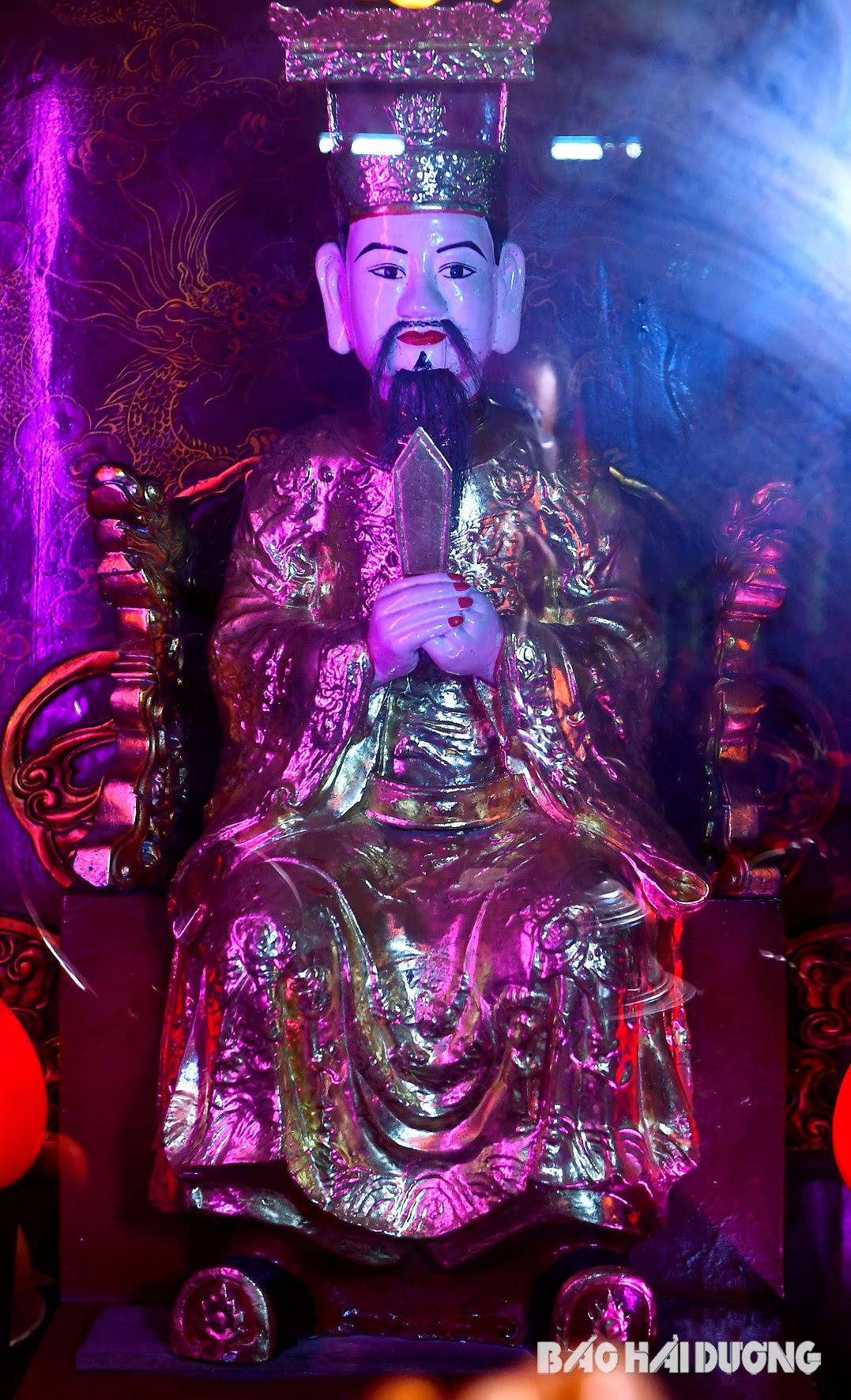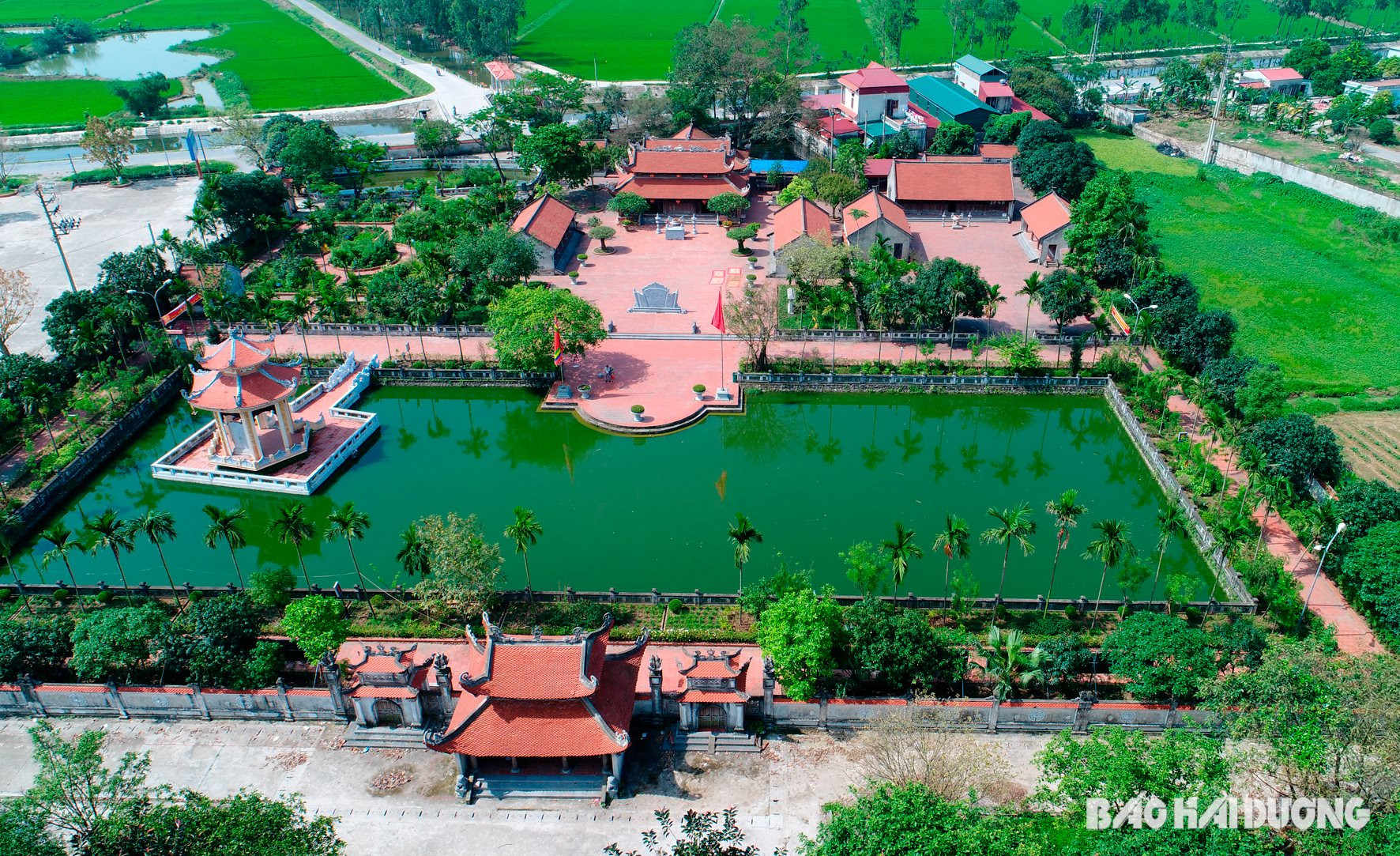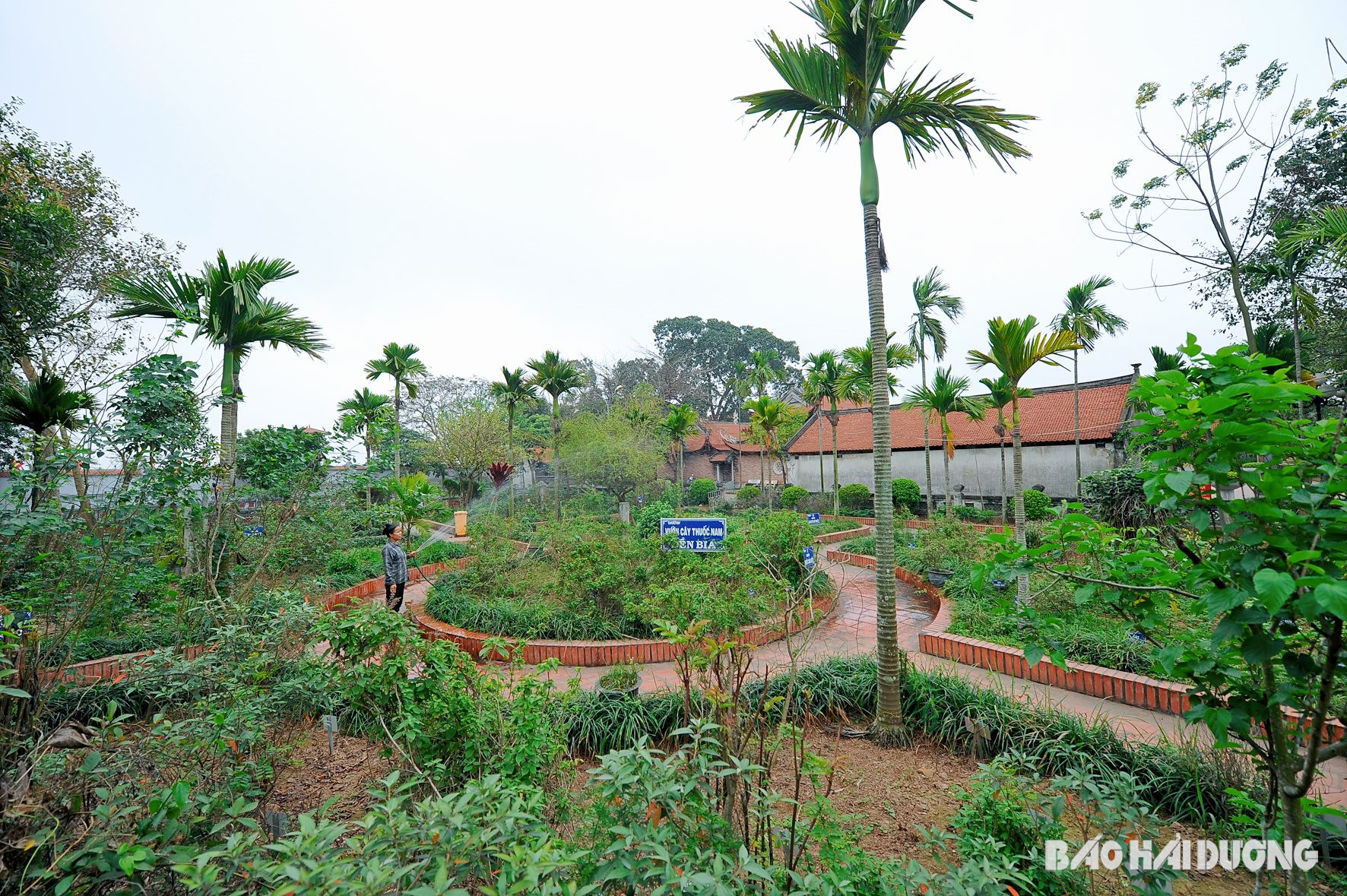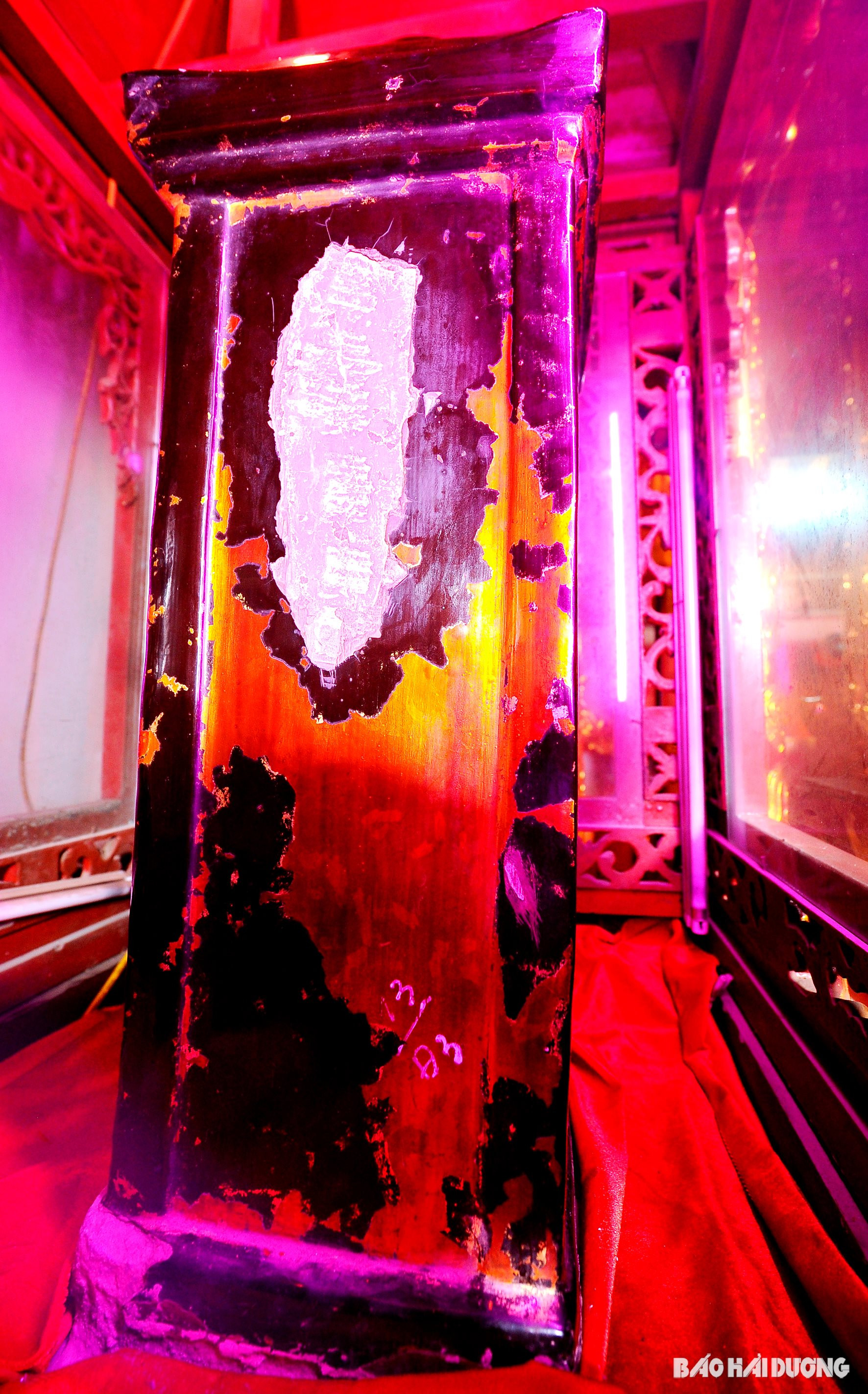Through all means from diplomacy, culture, tourism, and support from philanthropists and "Manh Thuong Quan", we hope that sooner or later we will be able to fulfill the earnest message of the Great Physician - Zen Master Tue Tinh.

Bia Temple in Van Thai village, Cam Van commune, Cam Giang district (Hai Duong) is a special national relic worshiping the Great Physician - Zen Master Tue Tinh. At the end of the Tran Dynasty, he was assigned to the delegation to the Ming Dynasty (China). There, it is said that he had great merit in curing the queen's illness and was then detained by the Northern court and not allowed to return to his country.
Sacred tombstone
According to legend, Dr. Nguyen Danh Nho, a native of Nghia Phu village, was an official of the Left Minister of the Ministry of Personnel during the Le - Trinh period and was appointed as the chief envoy to China in 1690. On his way back in 1691, he was fortunate enough to find Tue Tinh's tomb at a location in the Giang Nam region. According to legend, Mr. Nguyen Danh Nho said that the front of the stele bears Tue Tinh's name, and the back has a message: "In the future, if anyone from the South passes by here, please bring my remains back with you!"
However, bringing the remains of his fellow countrymen back to the country encountered many obstacles, perhaps because he was on diplomatic duty or because the Northern court did not allow it, so he could only do the job of stamping and copying the words from both sides of the stele and then bringing it back to the country. He asked the stonemason to erect the stele and engrave the words exactly according to the model. The boat carrying the stele followed the Thai Binh River to Van Thai wharf, turned into a stream and reached the beginning of Nghia Phu village. It was already dark, suddenly a big storm arose and the wind blew the boat, and it was only the next day that the stele could be retrieved. Believing that there was a sacred response because this place at the beginning of the village had a strip of land shaped like a knife for cutting medicine and two small ponds for medicine, the villagers of Nghia Phu unanimously built a small temple to worship the stele and also to worship the spirit of Tue Tinh. The temple has been renovated and expanded many times, and now has a majestic and imposing structure on a spacious land.
The stele is placed behind the statue of Tue Tinh in the splendid gilded wooden shrine. The stele is a cylindrical block of green stone, 72 cm high including the top, 58 cm wide, 20 cm thick, but all the inscriptions on the stele have been chiseled and worn away, making it unreadable. The reason is that in 1846, during the reign of King Thieu Tri of the Nguyen Dynasty, people spread the news that Tue Tinh had become a saint, and that the herbal medicine at the Stele Temple had the power to save people from all kinds of diseases. People from everywhere flocked to ask for medicine, worshiping as crowded as a festival.
King Thieu Tri thought it was a superstitious story, and was afraid that people would gather in large numbers and cause riots, so he ordered the Hai Duong judge to confiscate the stele, erase all the words, and put it in prison with shackles like a prisoner!
Later, a prison guard from Van Thai commune secretly removed the shackles and stole the stele and brought it back to Nghia Phu village to continue worshiping. The people of Nghia Phu village and Van Thai commune contributed a lot of money to build a more spacious temple, cast a statue of Tue Tinh and worship the stele despite the serious damage. The tyrannical power could not overcome the faith and admiration of the people for Tue Tinh - a person with the heart of Buddha and the talent of a holy doctor. The people themselves canonized and worshiped the Great Physician - Zen Master Tue Tinh throughout history.
Highlights of Tue Tinh's medical career

Tue Tinh's medical career needs to continue to have scientific research projects and practical applications to be worthy of his contributions. Within the framework of this article, we would like to briefly review a few major features. Tue Tinh has summarized and evaluated traditional medicine in both practical and theoretical aspects through two books: "Hong nghia giac tu y thu" (Chinese characters) and "Nam duoc than hieu" (written in national language, or Nom script of the nation). Through the two books, we can see that Tue Tinh is a person with profound knowledge of oriental medicine, with a lot of experience in treating diseases. He has distilled 13 most basic prescriptions called "thirteen prescriptions" which are mostly local herbs that are suitable for the disease conditions of the four seasons. These prescriptions are capable of being varied according to the spirit of the eight methods of oriental medicine. Tue Tinh's treatment is a combination of many methods from oral medicine, acupuncture, compresses... to health preservation.
Tue Tinh always aims for the spirit of "Nam Duoc Tri Nam Nhan" (Vietnamese medicine to treat Southern people). He collected hundreds of Vietnamese medicinal plants and thousands of prescriptions for 10 general medical departments, treating 184 types of diseases. Many prescriptions are easy to find, taking advantage of the medicinal properties of both animals and minerals. Now, studying them again, we are still very surprised, for example, the prescription "Thien Khai Hoan" (Thien Khai Hoan), in addition to familiar herbs, also contains native animals such as field crabs, earthworms, dung beetles, snake carcasses... According to Tue Tinh, this is a very good prescription for treating rheumatism in our country.

The tonic medicine "Phu tang chi bao" only has the following ingredients: young mulberry leaves, black sesame, the two ingredients are dried, ground into powder, mixed with honey and made into pills to drink for a long time to restore youth. He also collected and tested medicinal dishes from animals such as pigs, chickens, ducks, birds, fish... He clearly pointed out the properties and effects of each type, and how to handle each type to avoid toxicity. Tue Tinh wrote "Phu thuoc nam" as a way to propagate for people to learn and remember easily. He generously praised the uses of Vietnamese medicinal herbs, expressing the spirit of loving the nature and plants of Vietnam, aiming for independence in terms of medicinal herbs, and the sense of independence and self-reliance in building a national medicine.
He was also the first person to propose a method of health preservation. The poem, written in Vietnamese, is condensed into two lines: "Contain essence, nourish energy, preserve spirit/Pure heart, abstain from desire, keep feet, practice form". We see that it is very suitable for modern science and at the same time contains the thoughts of Buddhism and Taoism.
It can be said that Tue Tinh was the pinnacle of learning and intelligence at that time. Tue Tinh built 24 pagodas, trained thousands of disciples, and used the Zen monastery as a place to treat people. Tue Tinh's talent and virtue were so brilliant that the Ming Dynasty asked the Tran King to pay tribute in gold and silver along with many talented people from Vietnam, including Tue Tinh. It is said that when he went to the North, he cured the Ming Dynasty's queen. Surely Tue Tinh also treated many people, from court officials to poor people. According to a researcher, Tue Tinh was honored by the Chinese people as the male Hua Tuo, meaning comparable to the divine doctor Hua Tuo of the Three Kingdoms period.
The Ming Dynasty court wanted to exploit it forever, keeping Tue Tinh there and not letting him return. However, we understand that there are many jealous people. In China, there are 3 temples in 3 places with Tue Tinh's altar: Pho Da temple (Phuc Kien), The Da temple (Nanjing) and a temple in Anhui province. Tue Tinh deserves to be one of the Vietnamese medical ancestors, one of the first people to pave the way for Vietnamese traditional medicine. Nam Duoc Tri Nam Nhan - Tue Tinh's thought continues to awaken our era, to build an independent and modern national medicinal herbs.
Echoes of Tue Tinh's Last Wish for His Homeland

It can be inferred that during the time when he was detained by the Ming Dynasty in China, Tue Tinh went to pagodas in many localities to practice and treat people. On his way back from his diplomatic mission, Dr. Nguyen Danh Nho discovered Tue Tinh's tomb when he had passed away nearly 300 years earlier. More than 600 years have passed since the heartfelt message of the Great Physician Zen Master Tue Tinh, making not only the monks and nuns, people in the medical profession, or the hometown of Cam Giang, but all of us feel sorry and sympathetic! Everyone hopes that one day they will find and bring Tue Tinh's tomb back to their homeland.
The only person who knew where Tue Tinh's grave was was Dr. Nguyen Danh Nho, but he only left information about the address of Tue Tinh's grave in Giang Nam. There is a way to understand Giang Nam as the land south of the Truong Giang River today, including many large provinces and cities. However, there is information that there is a district of Giang Nam in Nanning City (Guangxi Province, China). Could it be that Tue Tinh intended to practice and cure the epidemic to gradually go south to find a way back to Vietnam?
In the last years of his life, due to old age and illness, he knew he had to stay in a foreign land, so he hired someone to engrave his last wishes on a stone stele. Compared to the places where Tue Tinh was worshiped, this place is closer to our country. This might be the address we look for first. However, the name of Giang Nam district in Nanning city might not have existed since that time? So there must be further plans to look around the areas where there are temples with his altars, which are in Fujian province, Nanjing city and Anhui province as mentioned above. This must have the direction of the State and local leaders with the departments of culture, sports, tourism, diplomacy, and health contacting the Chinese State and the authorities of the neighboring country, assigning a unit to organize the implementation.
Currently, there is a Zalo group called "Group of people researching Tue Tinh" that shares the idea of exploring and exploiting more information about Tue Tinh's medical academic works and the goal of finding his grave. We see that in today's era with the development of information technology and transportation, tour guides can take visitors to the place upon request. Regarding finance, in a conversation with Mr. Ha Quang Thanh, Head of the Monument Management Board of Cam Giang district, with a confident voice, he proposed that in addition to the budget provided by the State, if local leaders just speak up, people and businesses are willing to donate enough as requested. We know that in China, the cultural sector of each locality has an agency specializing in cultural and historical heritage. They have a list of heritages down to the graves or places of worship of famous foreigners in the locality, can it help with convenient searching and searching?
Through all means from diplomacy, culture, tourism, scientific organizations of the two countries including overseas Vietnamese and philanthropists, "Manh Thuong Quan" supporters..., we hope that sooner or later we will be able to fulfill the sacred wish of the Great Physician - Zen Master Tue Tinh.
PHUC LAI-VIET THANH-VAN MAU